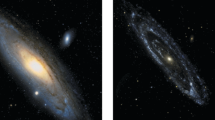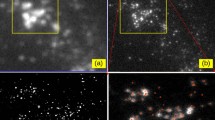Abstract
We present scientific program construction principles and a time allocation scheme developed for the World Space Observatory—Ultraviolet (WSO-UV) mission, which is an international space observatory for observation in UV spectral range 100–300 nm. The WSO-UV consists of a 1.7 m aperture telescope with instrumentation designed to carry out high resolution spectroscopy, long-slit low resolution spectroscopy and direct sky imaging. The WSO-UV Ground Segment is under development by Spain and Russia. They will coordinate the Mission and Science Operations and provide the satellite tracking stations for the project.
The WSO-UV will work as a targeted scientific observatory. Three scientific programs will be carried out at the observatory. Core Program of scientific observations, which deserves large amounts of observing time, will be defined by the WSO-UV Science Committee to allow the conduction of high impact or legacy scientific projects. Funding Bodies Program is the guaranteed time granted to each one of the national bodies funding the WSO-UV project. Guest observer program for everyone, or Open Program, consists of astronomical observations obtained with the WSO-UV by astronomers who may or may not belong to the WSO-UV international consortium. It is open to excellent scientific projects from the world-wide community and occupies up to 40% of total observational time.
Apart from the particularities associated to a science mission, this new mission will be affected by a new concept of observations management, trying to maximize the scientific return of this mission, and the shared operations between the two sites located in Spain and Russia.
A brief summary of the algorithmic strategies analyzed for scheduling optimization is also given in the paper.
Similar content being viewed by others
References
Boyarchuk, A.A. (ed.): Astrophysical Studies with the “Astron” Space Station. Nauka, Moscow (1994) (in Russian)
Gómez de Castro, A.I., Yáñez J.: Astron. Astrophys. 403, 357 (2003)
Gómez de Castro, A.I. et al.: Astrophys. Space Sci. (2011, this issue)
Kappelmann, N., et al.: In: Turner, M., Hasinger, G. (eds.) Space Telescopes and Instrumentation II: Ultraviolet to Gamma Ray. Proc. of the SPIE, vol. 6266, p. 62660X (2006)
Kappelmann, N., et al.: Astrophys. Space Sci. (2011, this issue)
Sachkov, M.: Astrophys. Space Sci. 329, 261 (2010)
Shustov, B., et al.: Astrophys. Space Sci. 320, 187 (2009)
Shustov, B., et al.: Astrophys. Space Sci. (2011, this issue)
Author information
Authors and Affiliations
Corresponding author
Rights and permissions
About this article
Cite this article
Malkov, O., Sachkov, M., Shustov, B. et al. Scientific program construction principles and time allocation scheme for the World Space Observatory—Ultraviolet mission. Astrophys Space Sci 335, 323–327 (2011). https://doi.org/10.1007/s10509-010-0589-2
Received:
Accepted:
Published:
Issue Date:
DOI: https://doi.org/10.1007/s10509-010-0589-2




